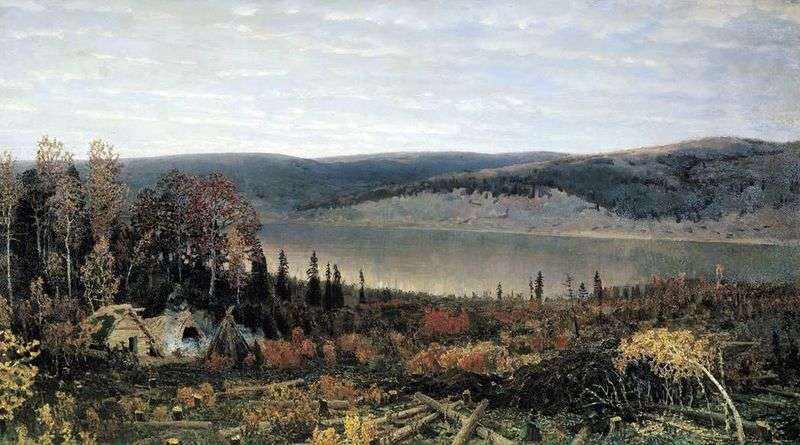
In such works as “Kama”, “Taiga”, “Northern Territory”, “Mountain Lake in Bashkiria”, “Lake”, Apollinarius Vasnetsov appears as a master of his completely mature creative age, a painter with a distinctly developed personality.
These canvases are in the full sense of the word the peak of AM Vasnetsov’s works as a landscape painter; they make a significant contribution to the development of the entire Russian landscape painting. Turning to Vasnetsov’s landscapes of the heyday of his talent – “Kama”, “Siberia” and others – one can see that in them the artist becomes a true master of landscape painting, which can compete with the depth and power of influence on the viewer with the best pictures of historical and portrait genre. If it is permissible to compare painting with music, the “Kama” of 1895 can be compared to a solemn symphony dedicated to Russian nature.
Little we know of landscapes equal to “Kame” by the epic and force of influence on the viewer. The epic landscape, painted today and depicting everyday life around us, even objects close to us, conveys the primitive antiquity of the earth, evokes in the viewer a sense of a thousand years ago, as well as the folk epic, including late layers, preserves the sensations of the movement of the whole life process, all changes of the earth. The epic nature of the landscape, in general terms, is a depiction of the life of nature in time, a pathetic story about the centuries-old life of the earth.
Such an image of nature was not unexpected, a new phenomenon in the history of the Russian landscape. It was prepared by the entire course of the development of ideological realistic art – from the national landscape in general, in which one could discern the most characteristic features, to individually portrayal depicting specific areas, and from it to a comprehensive deepening and generalization of the image of native nature in the works of the Wanderers, in general terms the path of development and the emergence of an epic landscape, showing nature not only in its present form, but also in its unceasing movement.
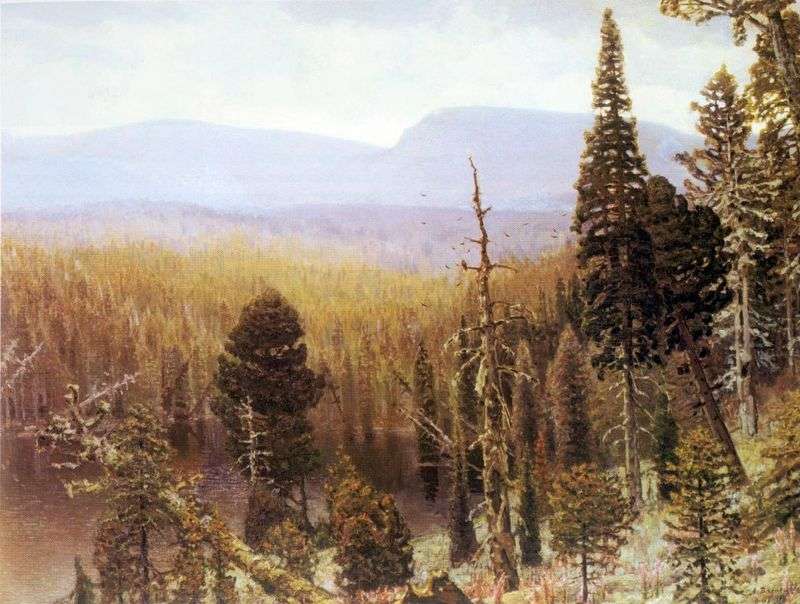 Taiga in the Urals. Blue Mountain by Apollinarius Vasnetsov
Taiga in the Urals. Blue Mountain by Apollinarius Vasnetsov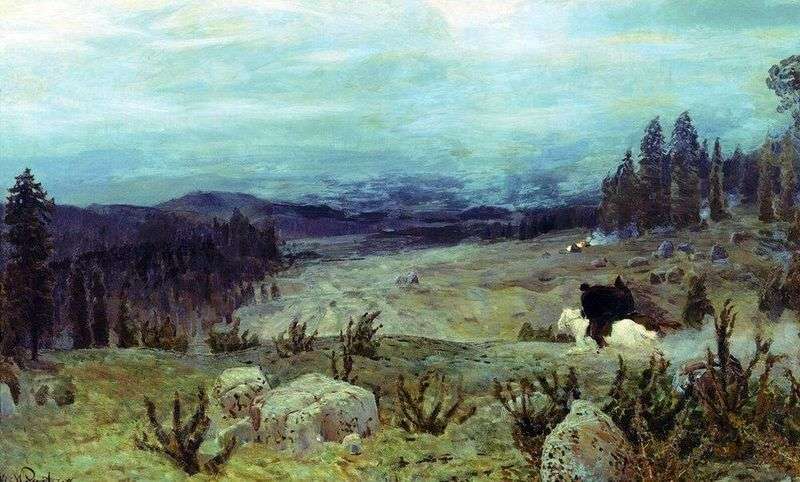 Siberia by Apollinarius Vasnetsov
Siberia by Apollinarius Vasnetsov Lake by Apollinarius Vasnetsov
Lake by Apollinarius Vasnetsov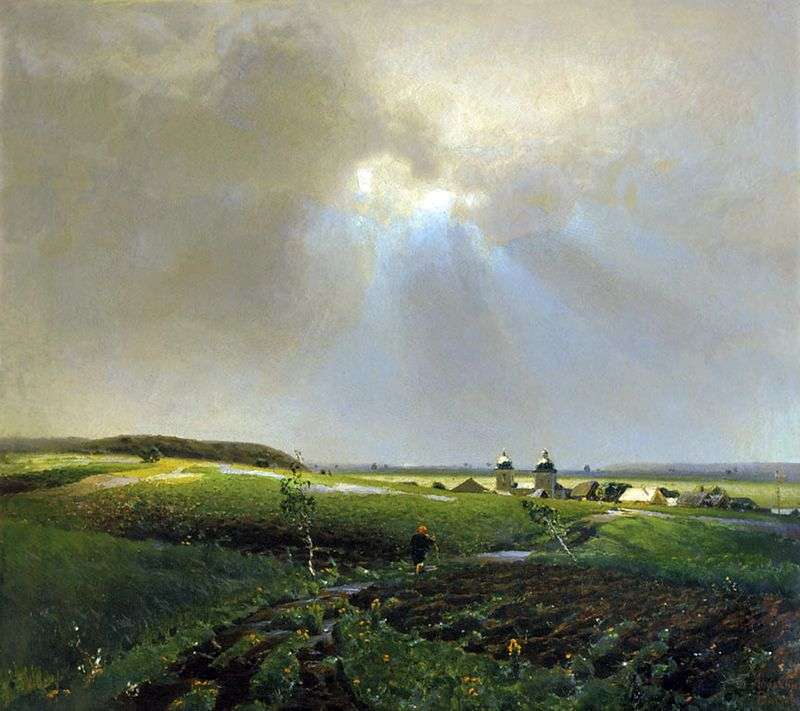 After the rain by Apollinarius Vasnetsov
After the rain by Apollinarius Vasnetsov Homeland by Apollinarius Vasnetsov
Homeland by Apollinarius Vasnetsov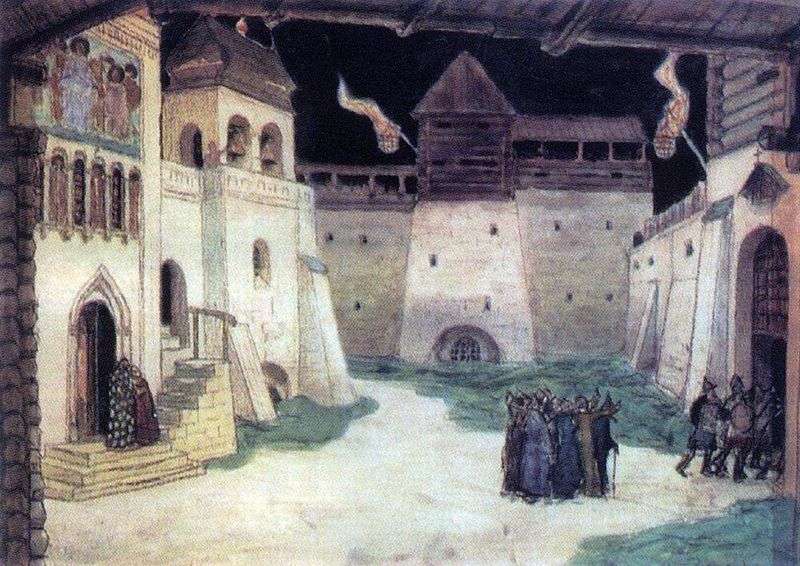 Area in the besieged Kitezh by Apollinarius Vasnetsov
Area in the besieged Kitezh by Apollinarius Vasnetsov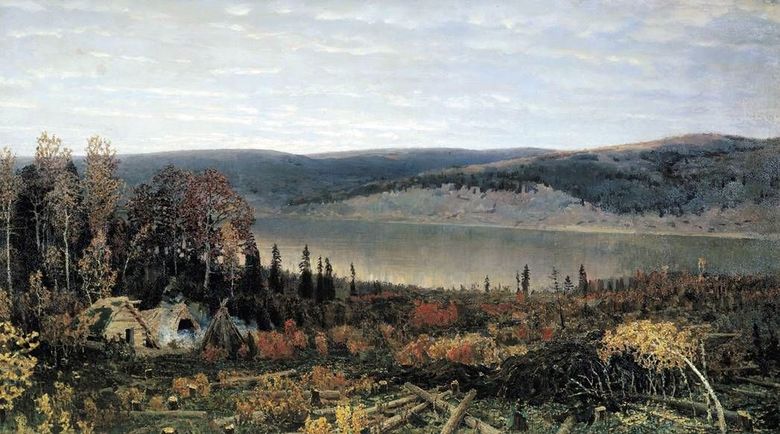 Kama – Apollinaris Vasnetsov
Kama – Apollinaris Vasnetsov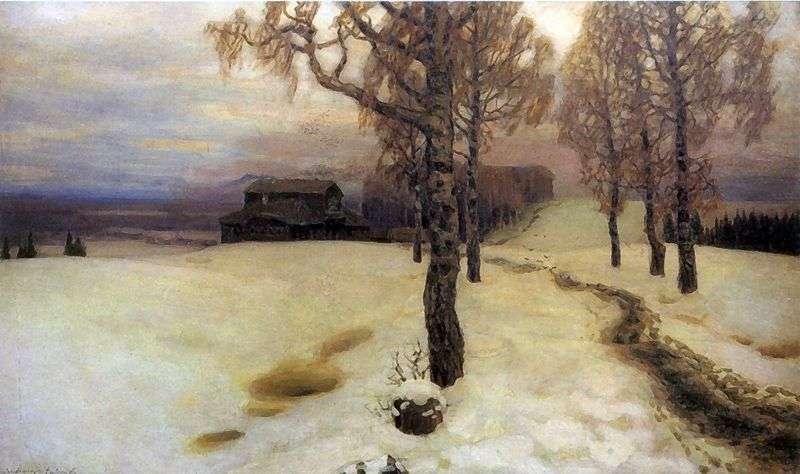 Thaw by Apollinarius Vasnetsov
Thaw by Apollinarius Vasnetsov